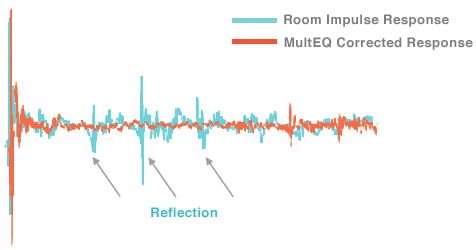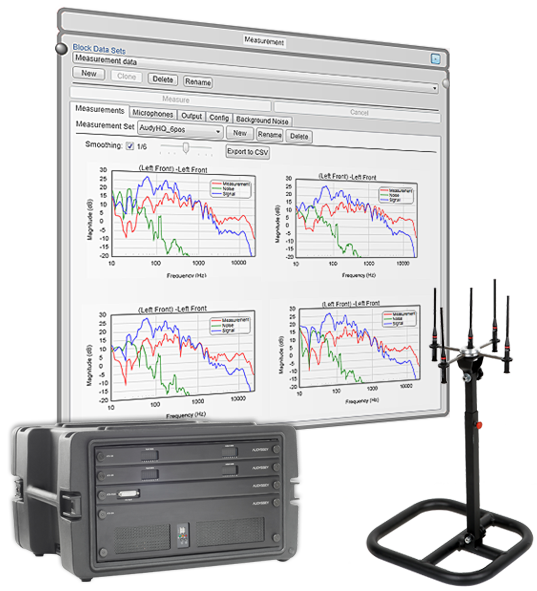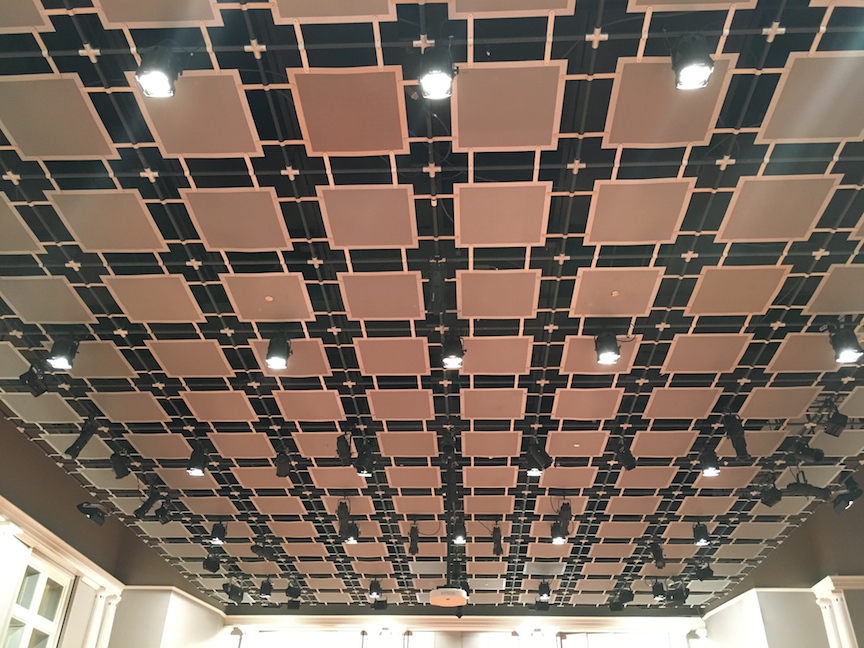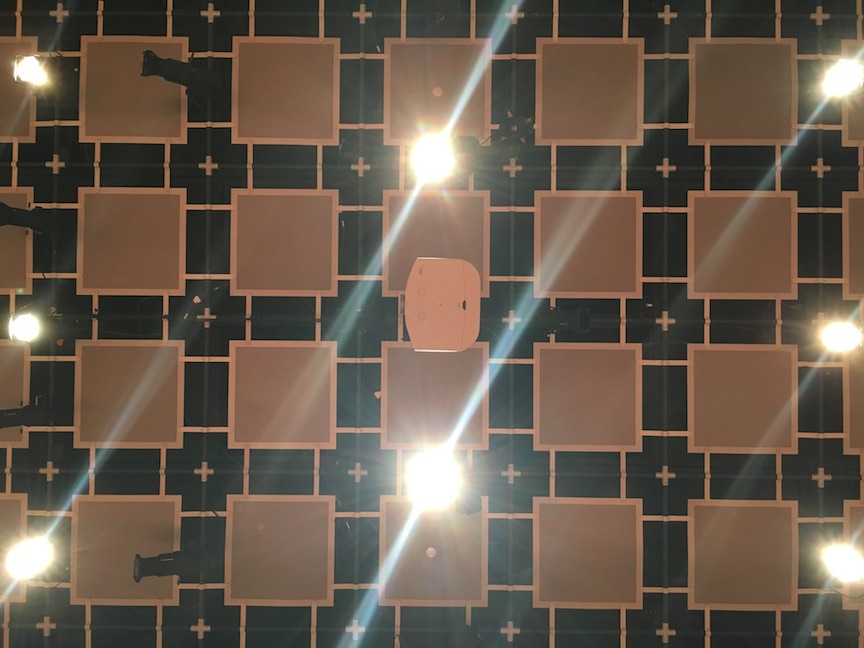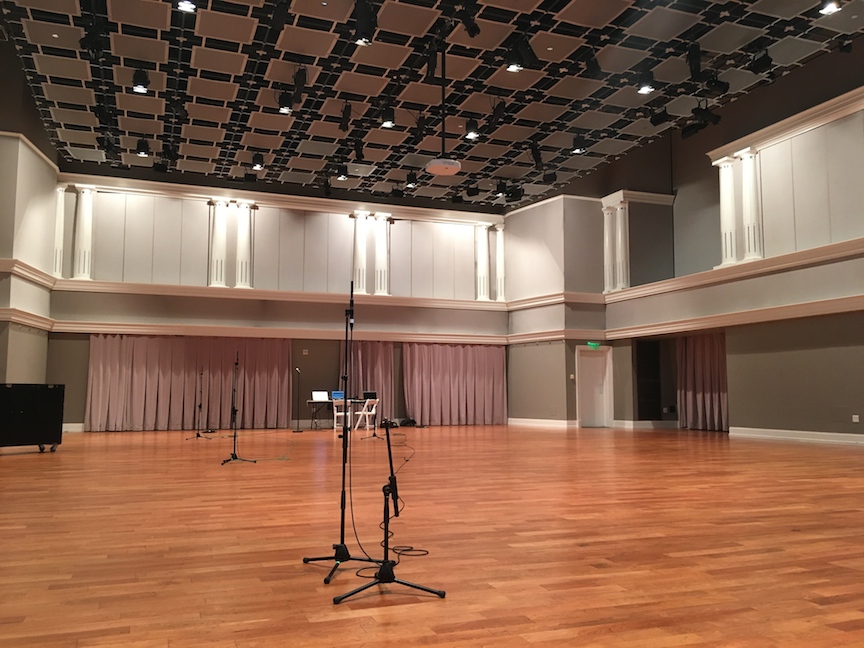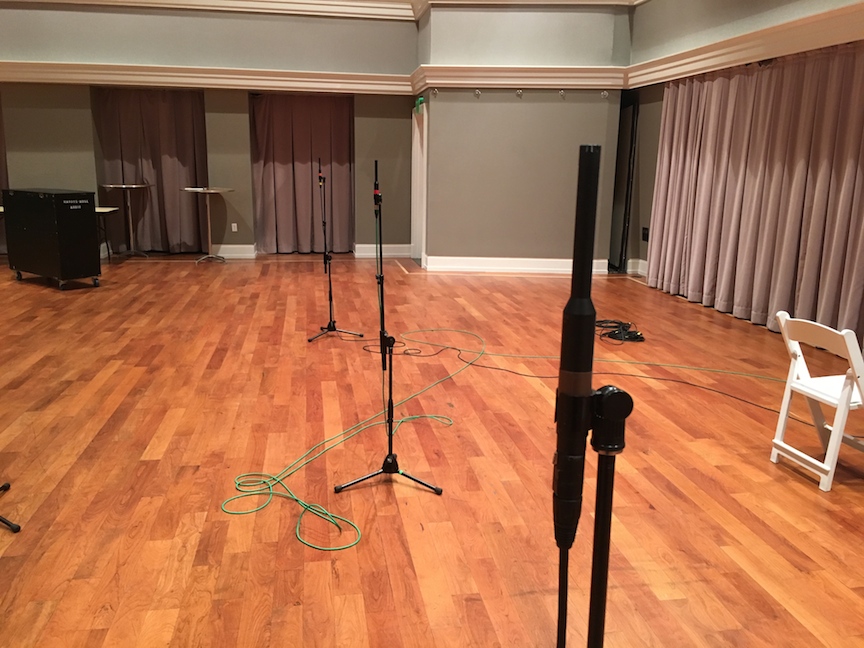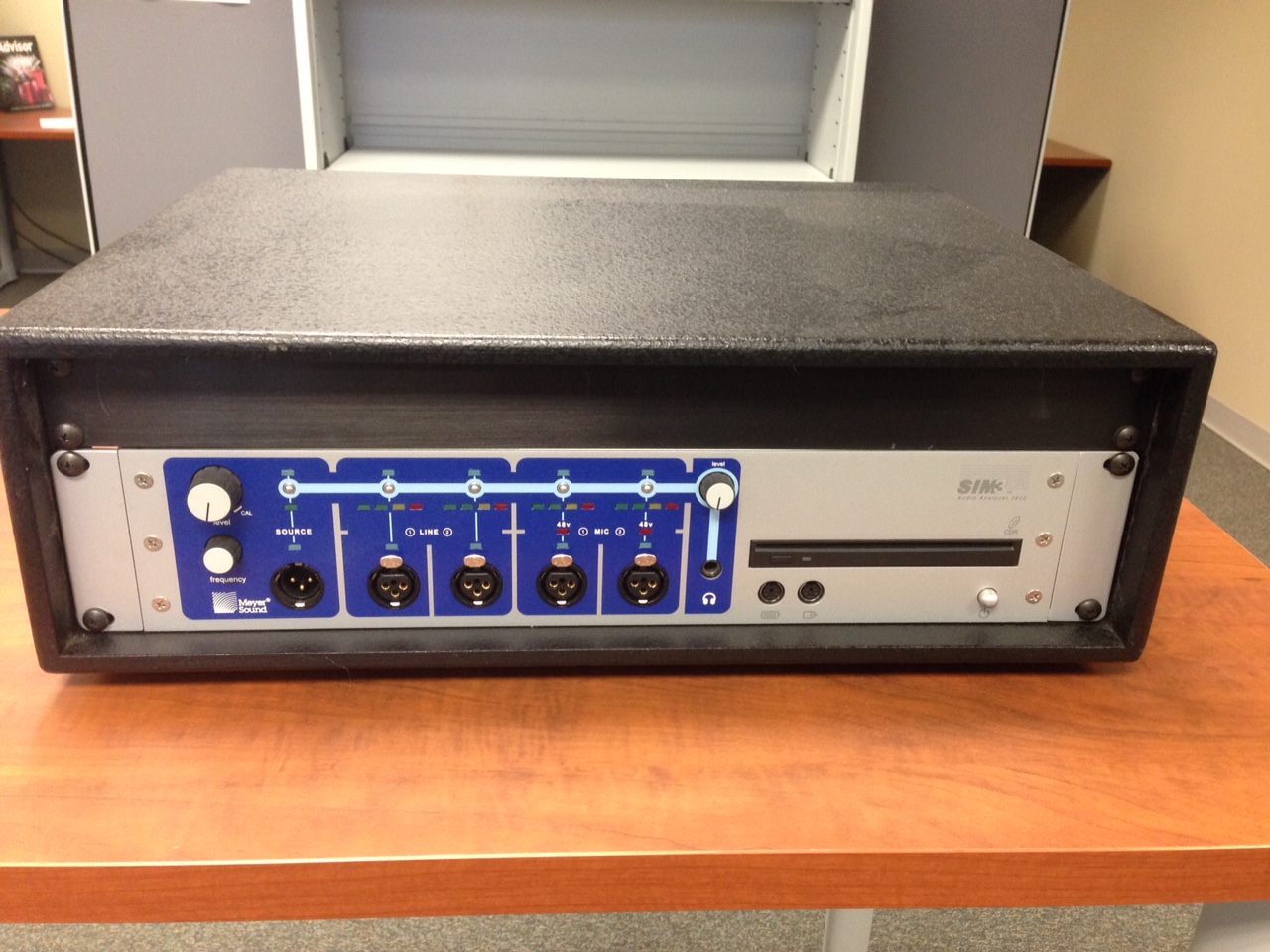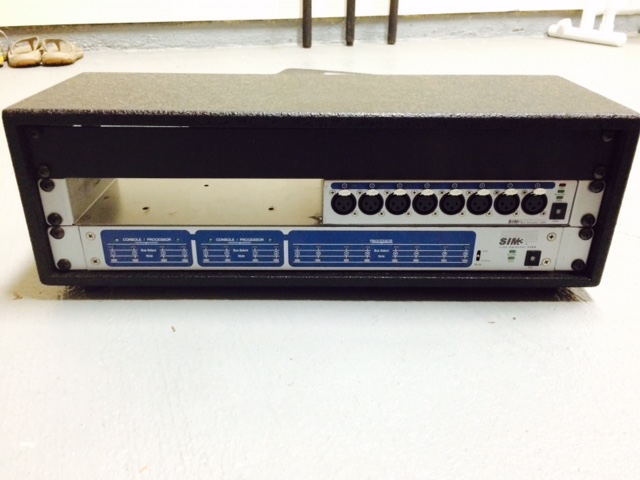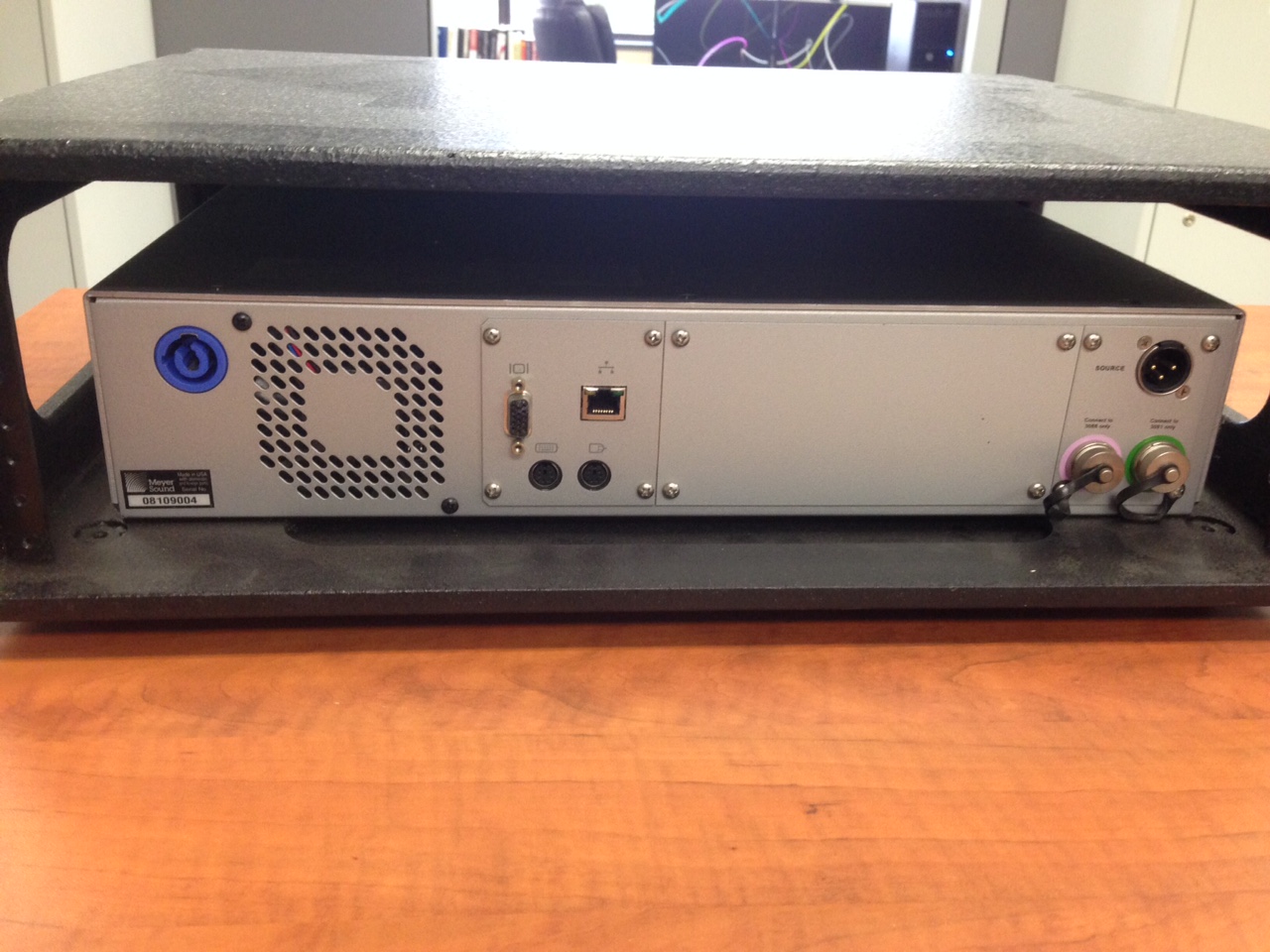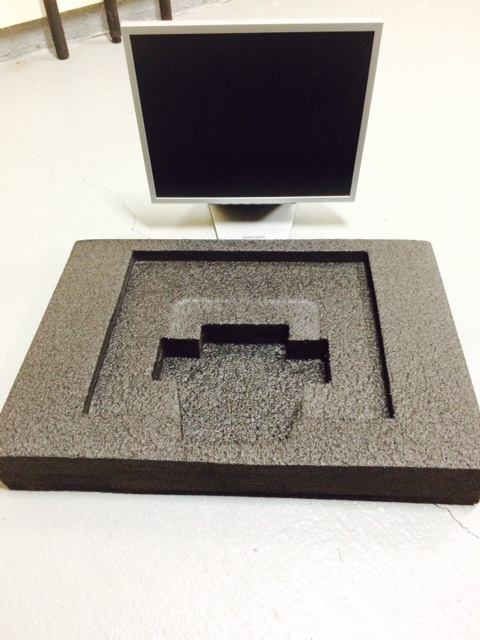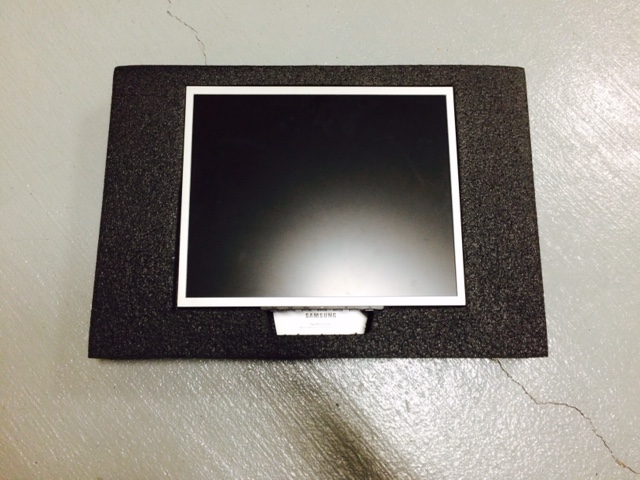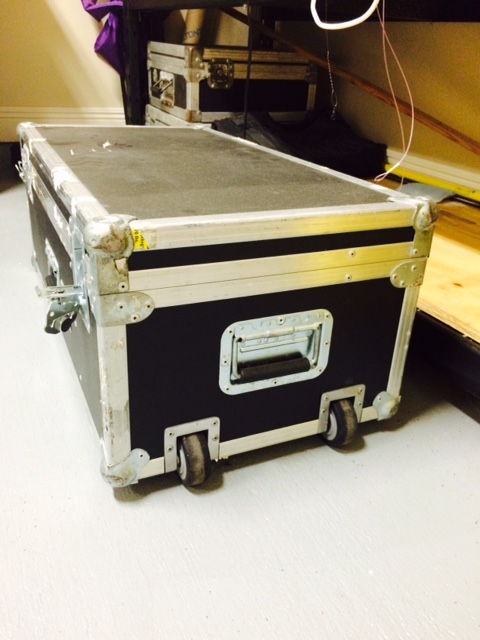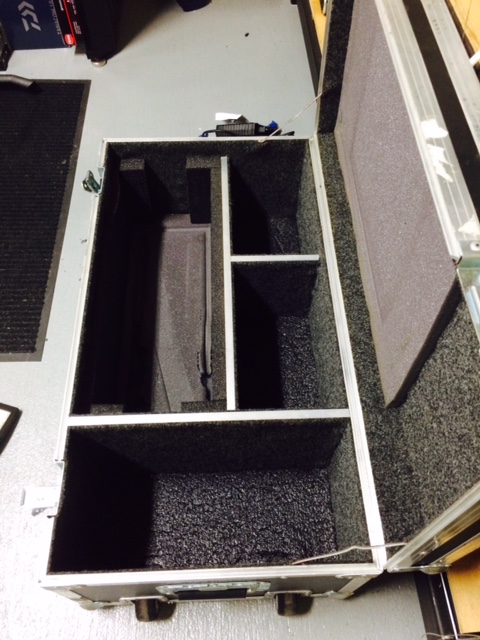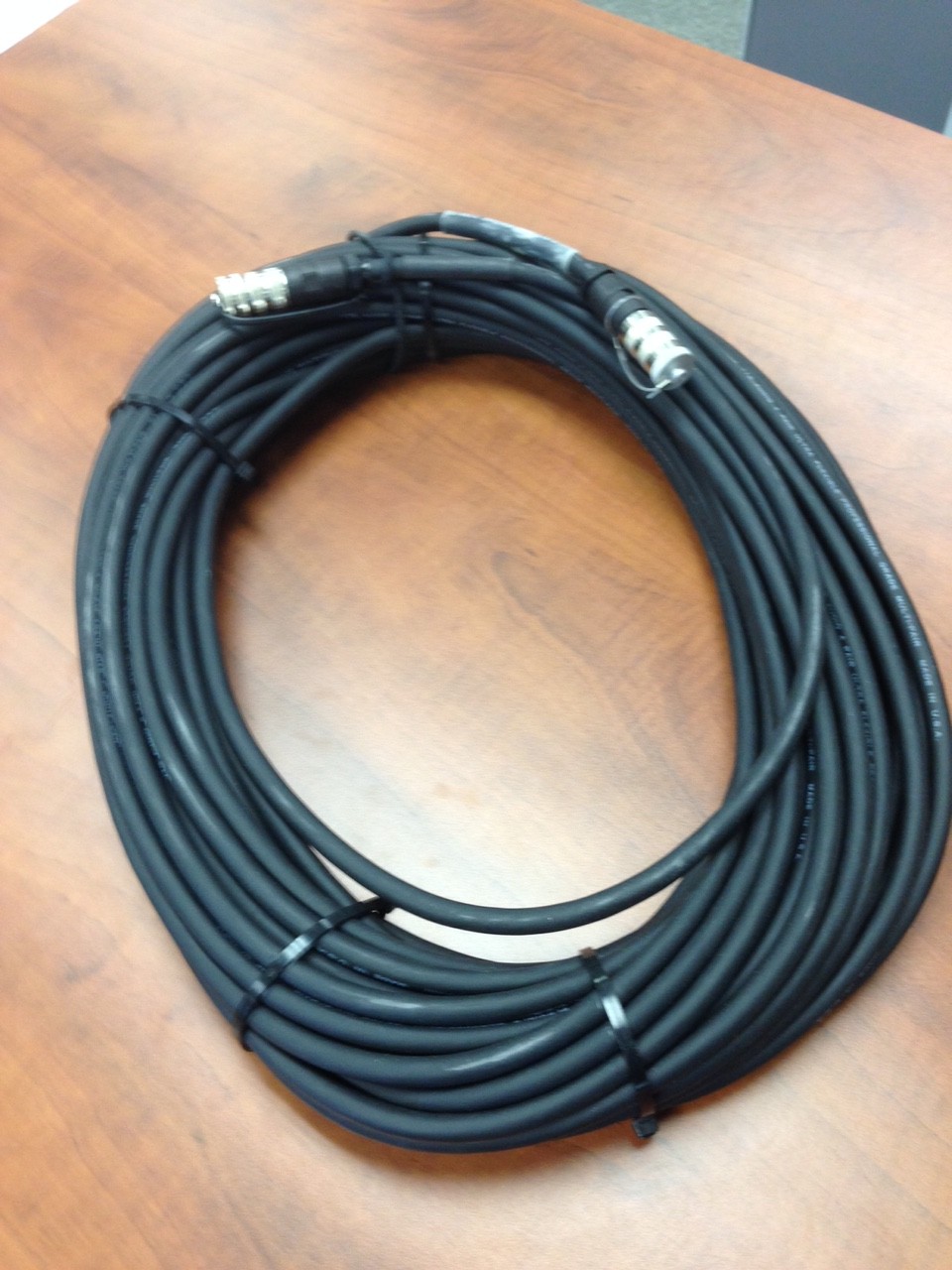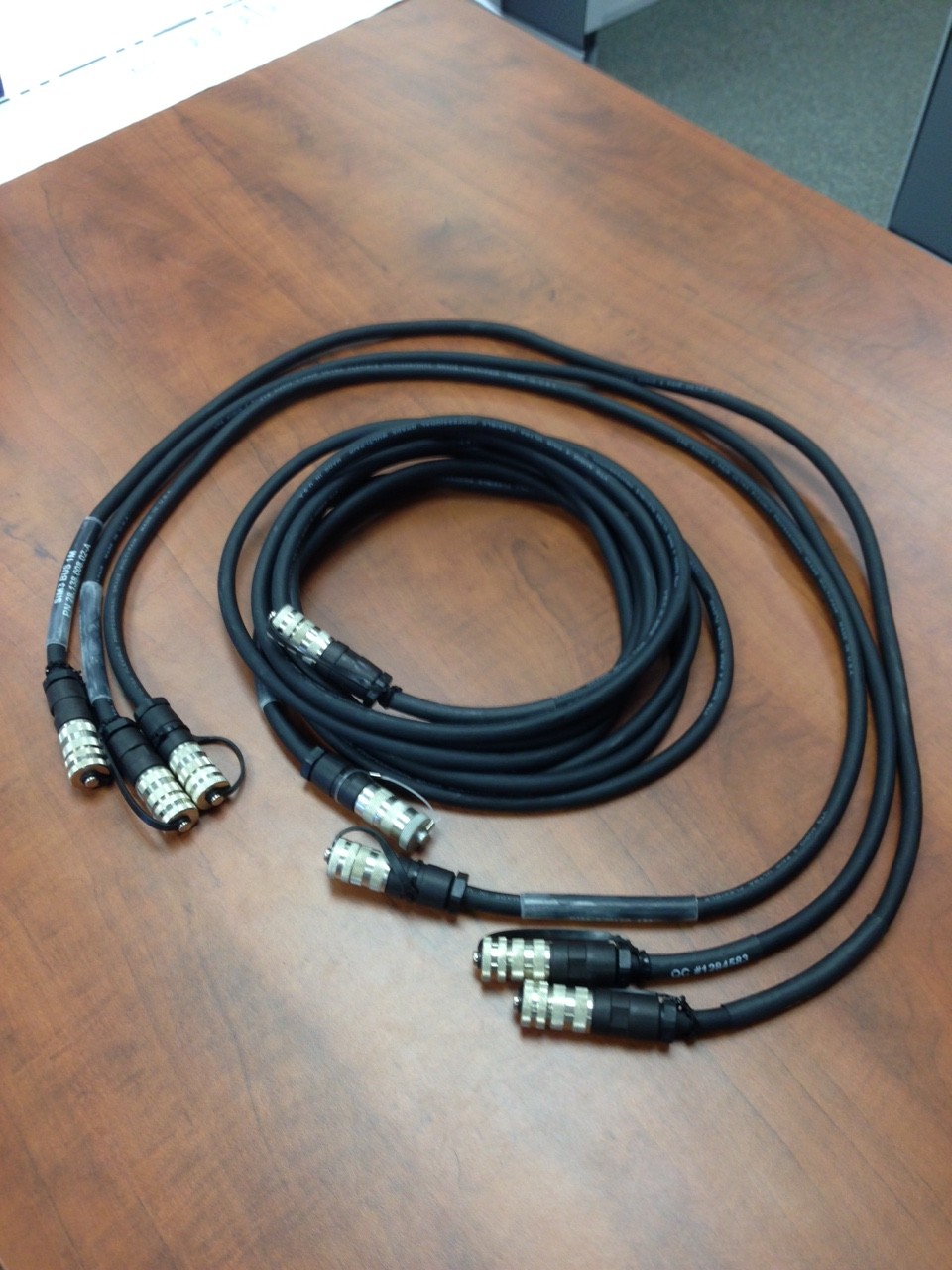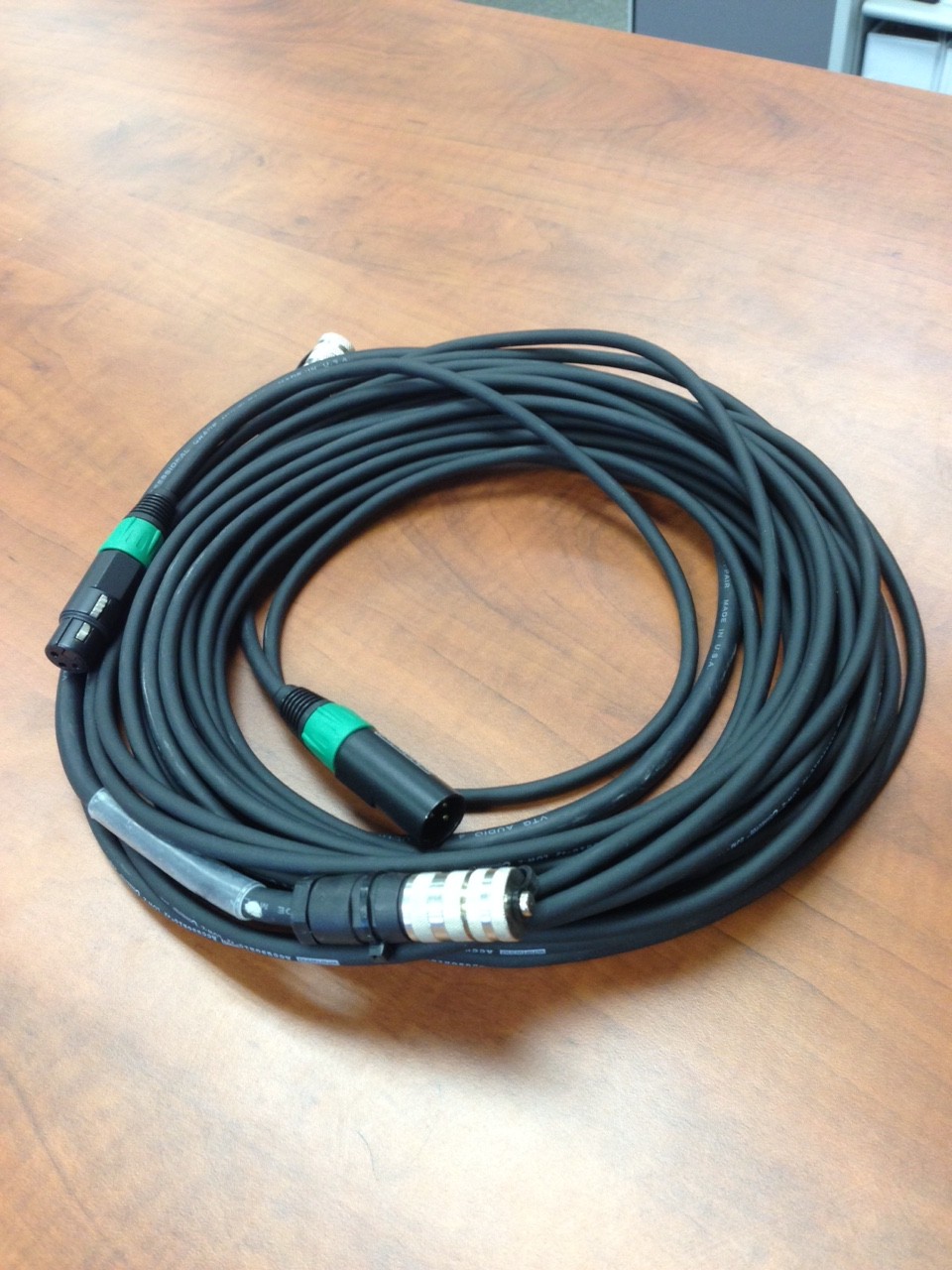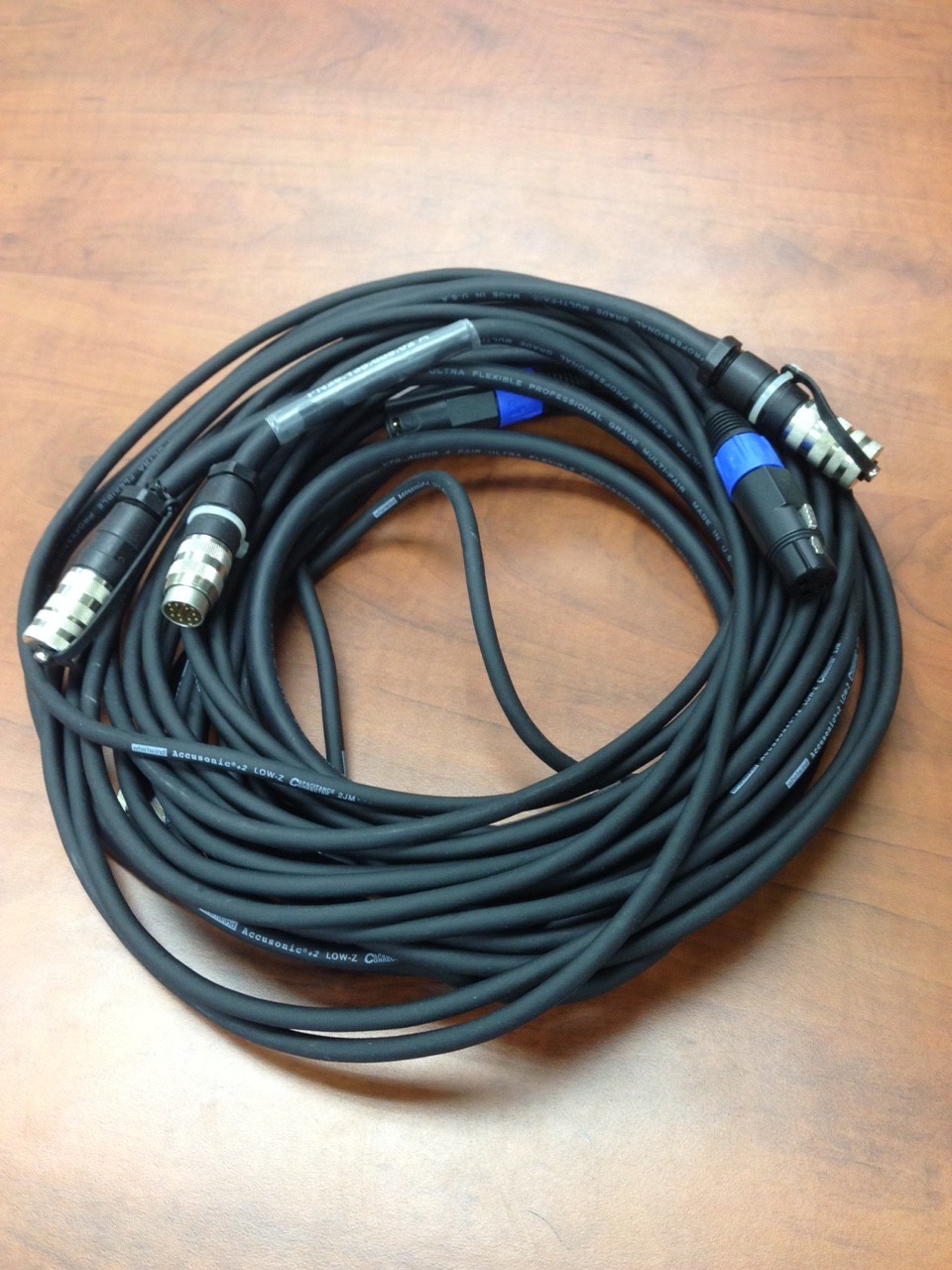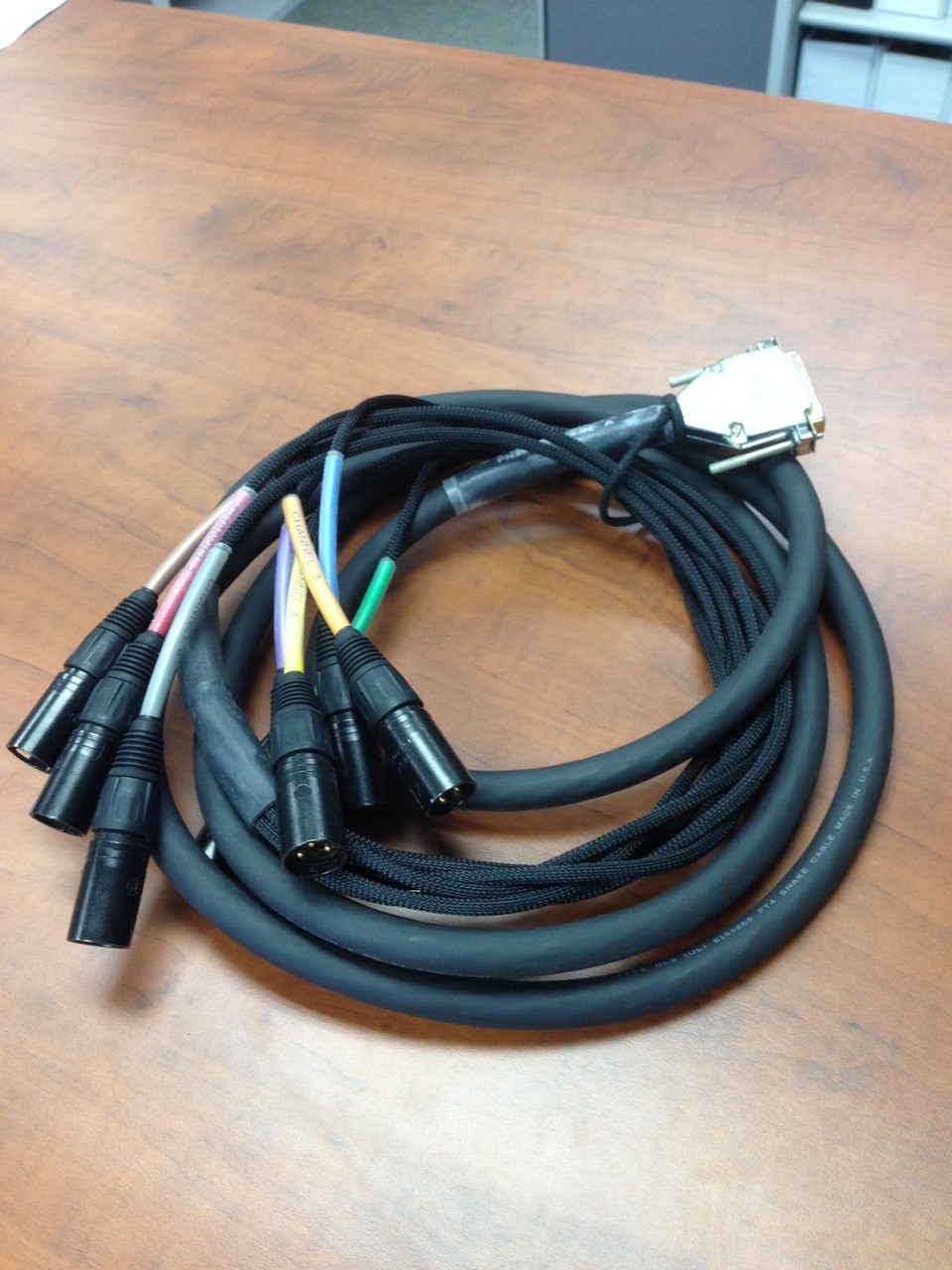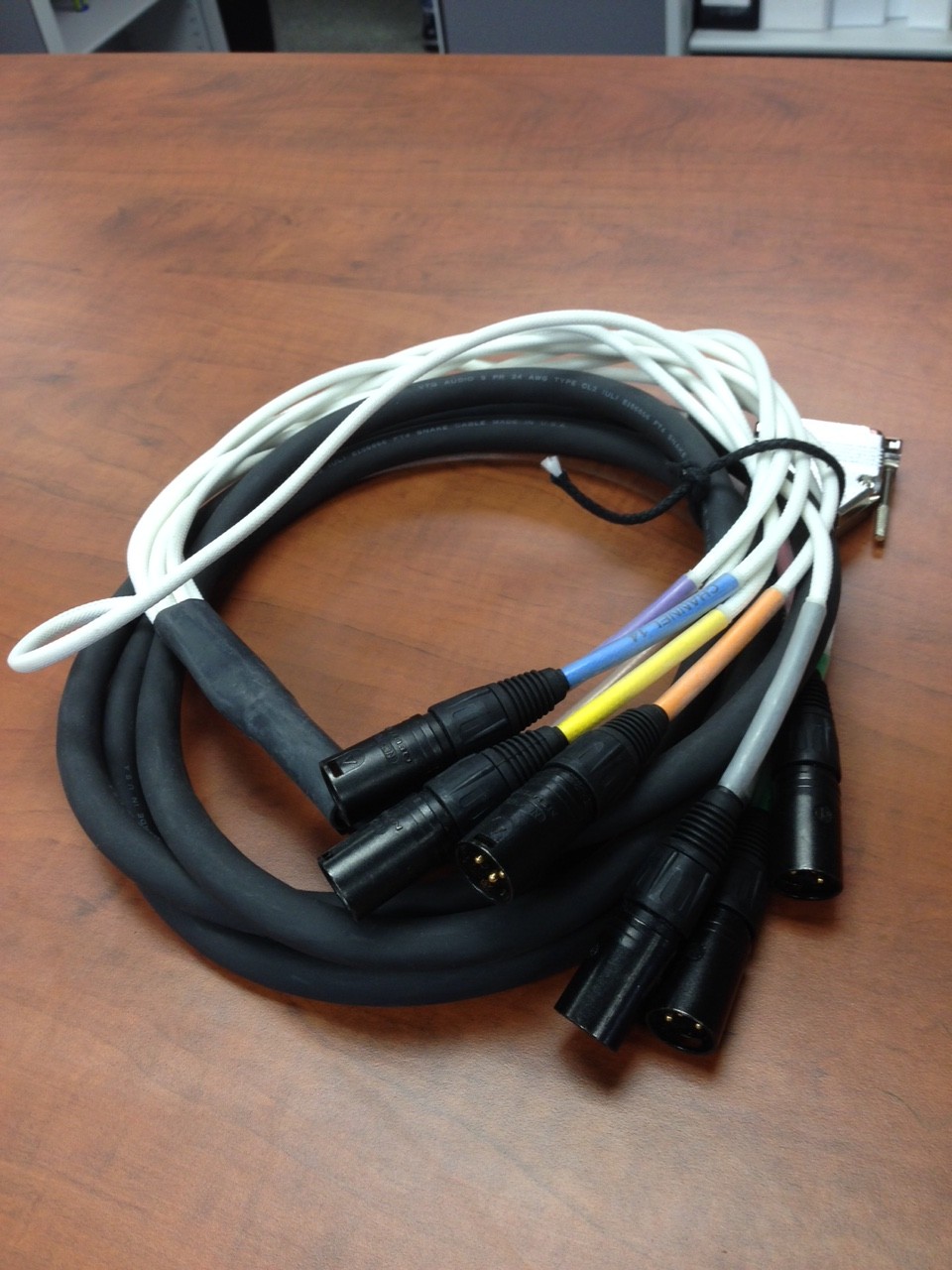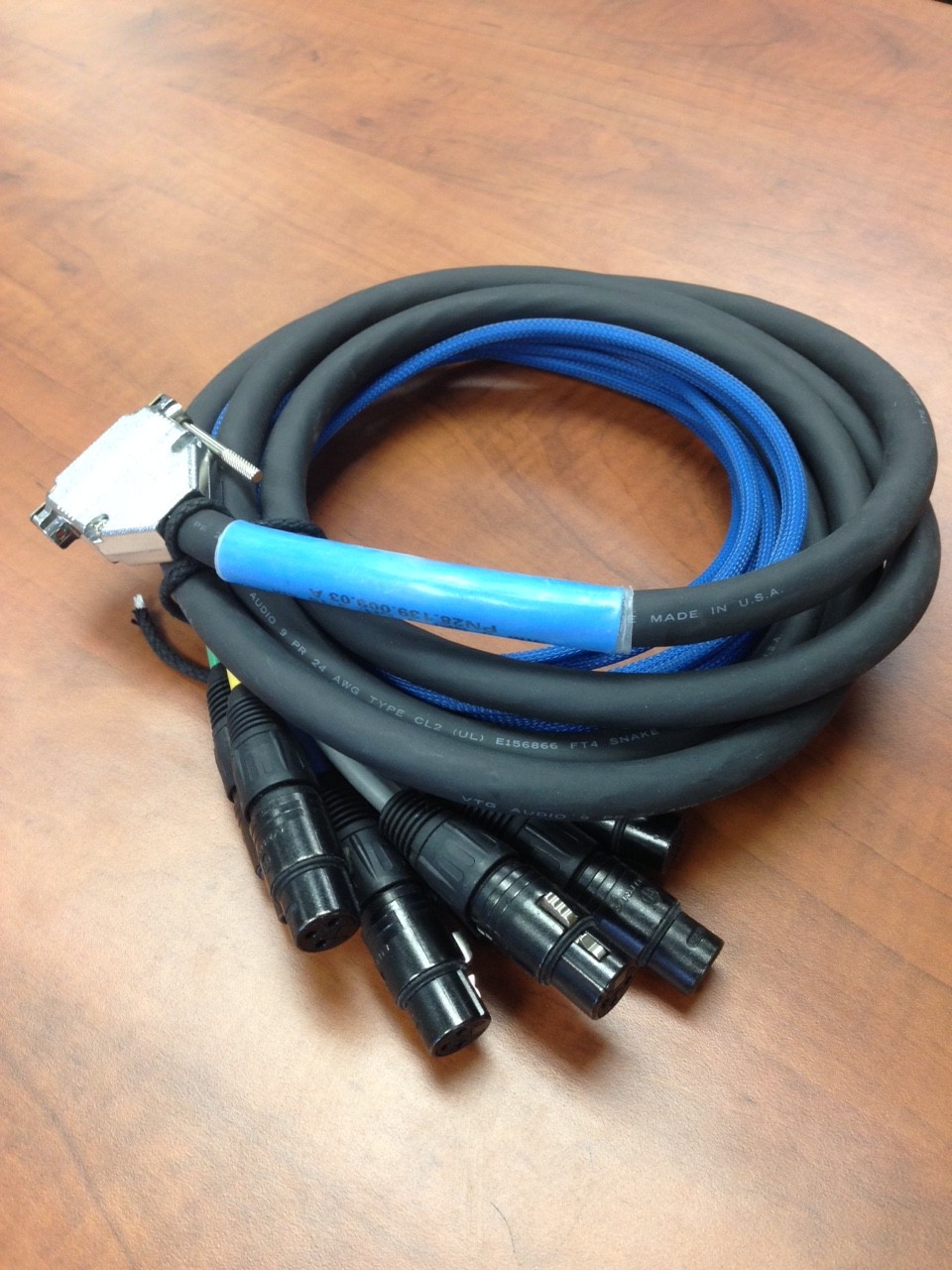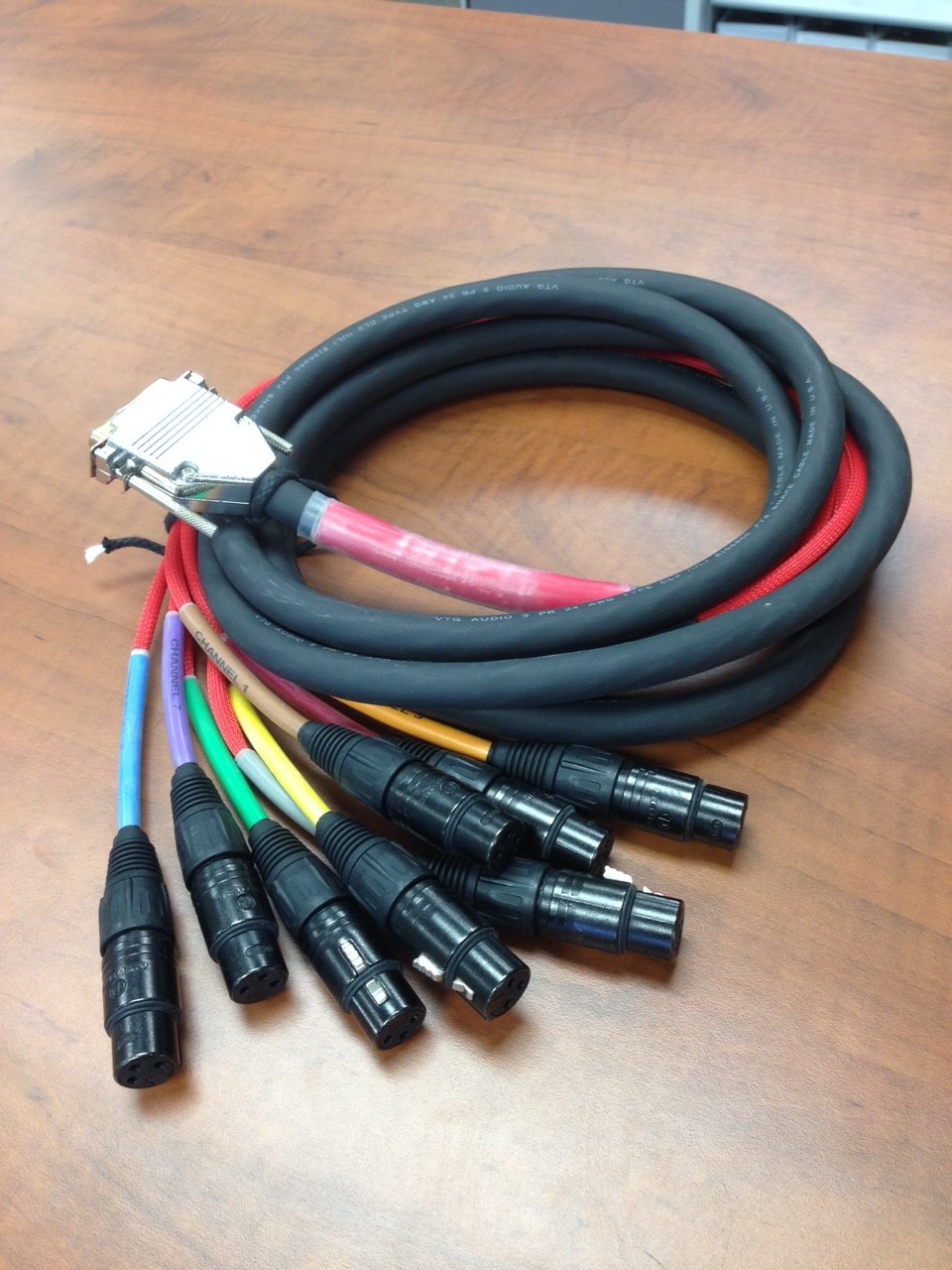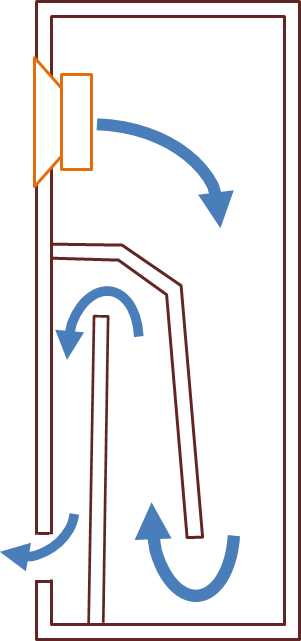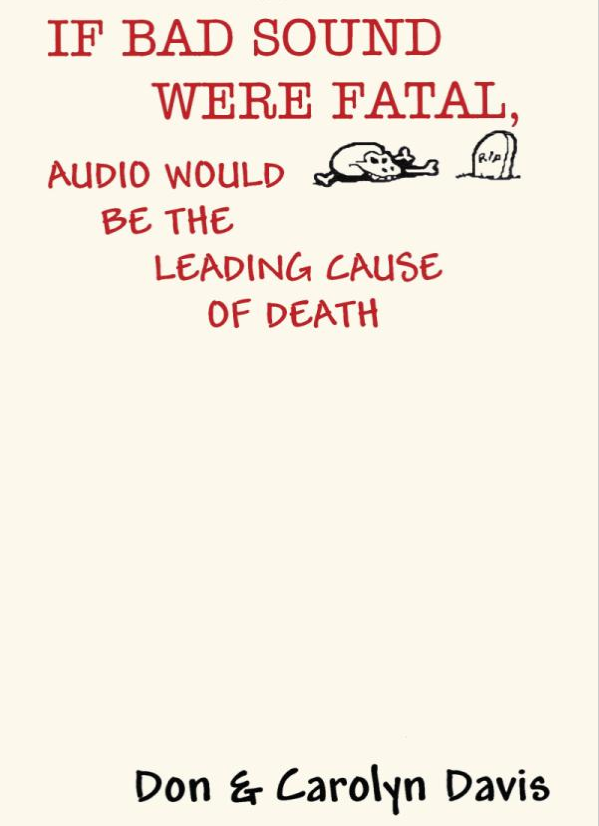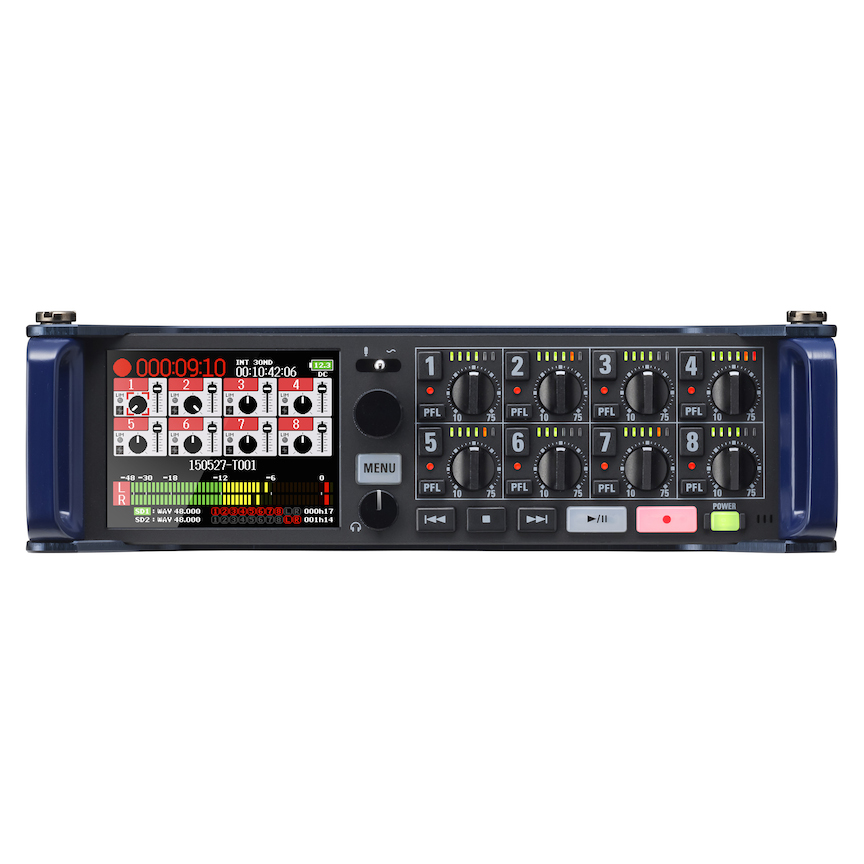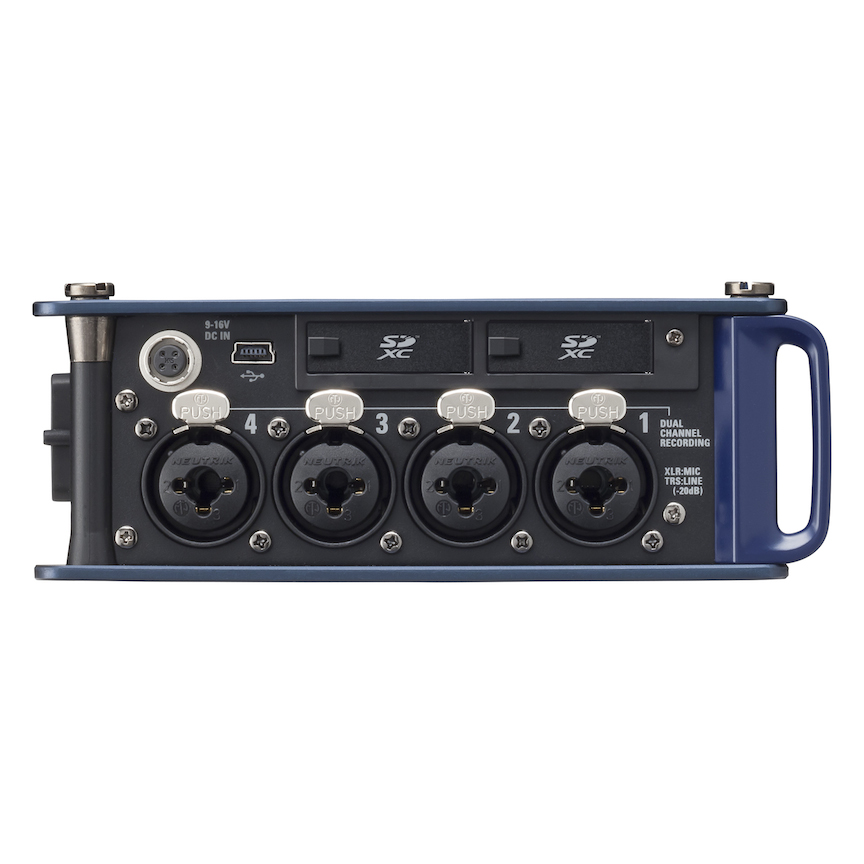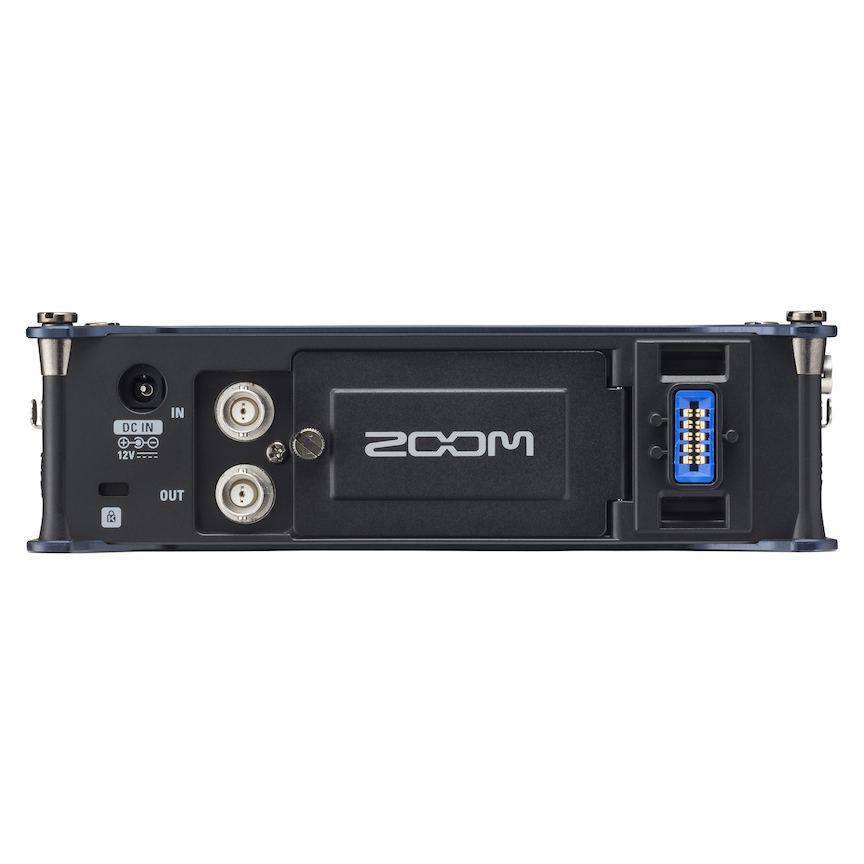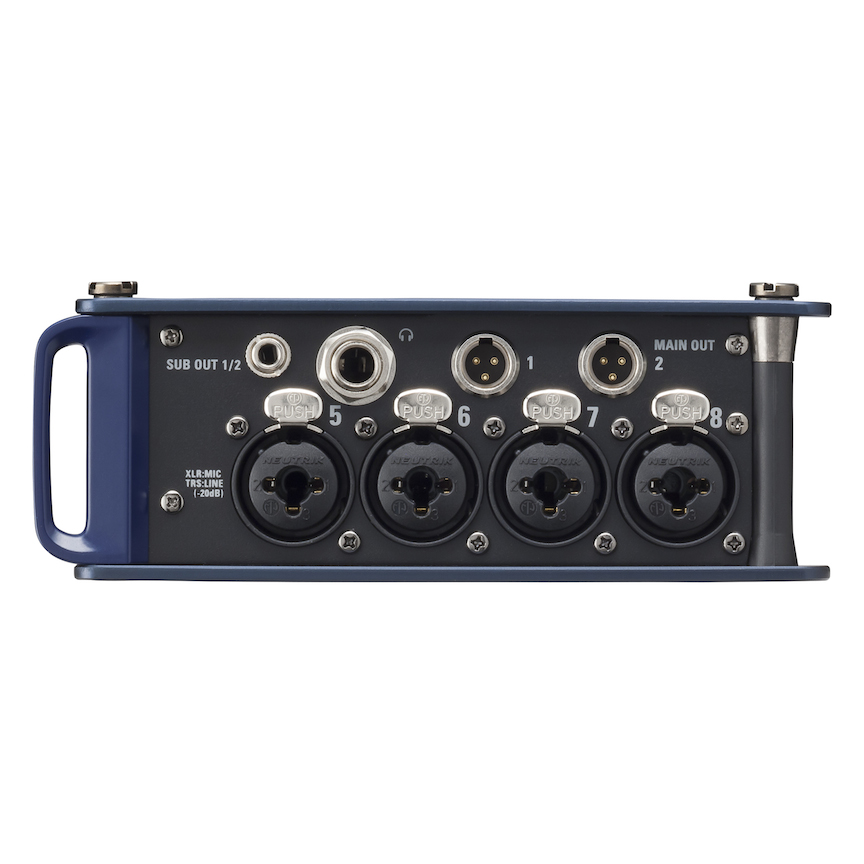If you want to take a look back in time, read these JBL-Smaart documents:
jblpro.com – smaart pro PDF
jblpro.com – jbl smaart pro webpage
jblpro.com – smaartqa PDF
AES conference 59 documents and media
At the link below, there are videos, mp3s and PDFs of some presentations by Bob McCarthy, Jamie Anderson, Dave Gunness, Merlijn van Veen, etc…
Wave Length Calculator with harmonics
Bass Trap Myths by Ethan Winer
Sub align calculator explained – Merlijn van Veen
The application the video below explains can be secured here:
Matched Slopes by Merlijn van Veen
Beyer MM-1 calibration files for Smaart
A friend of mine has (16) Beyer MM1 measurement mics with calibration files but they are not formatted to load directly into Smaart without be manipulated.
beyerdynamic.com – MM-1 webpage
Beyer MM-1 spec sheet PDF
Beyer MM-1 user manual PDF
As soon as I figure out how to get the file formatted to load into Smaart, I will post the details.
Audyssey MultEQ
I just learned about Audyssey and it’s various technologies. One of them being MultEQ. I cannot speak of whether the concept / system works or not but it’s interesting to consider.
Quote:
“At the core of everything Audyssey creates is our first technology, MultEQ™. Based on 6 years and $6 million of research at the USC Immersive Audio Lab, MultEQ delivers accurate, enveloping, and distortion-free sound in any listening environment. It has won numerous awards and is the basis of several other Audyssey technologies. MultEQ has been established as the standard room correction technology for today’s leading audio products.”
Surrounded By Sound – Acquisition and Rendering Methods for Immersive Audio PDF
The Audyssey Tuning System
This is an interesting find.
audyssey.com – Audyssey Tuning System
Quote:
The Audyssey Tuning System is the newest and most advanced way for manufacturers to optimize sound. Exciting stuff, if you’re the type of nerd who gets excited by ground-breaking audio engineering.
The ATS technology bundle is designed to be implemented at the factory level, so automobile and electronics companies can tune their products directly off the line to provide their consumers with optimized and consistent sound. We’re bringing innovation to industry by making it a fully integrated part of any industry’s manufacturing process.
ATS begins with MultEQ, Audyssey’s revolutionary space equalization software. Except a traditional MultEQ uses a single microphone. MultEQ on ATS uses 8 microphones and records chirps simultaneously. So if you’re a geek, you already love it. ATS is processing audio information in multiple locations, from multiple directions, not just averaging for a sweet spot, but precisely mimicking the actual listening experience. That’s a lot of information. So a job that used to take literally days, now can be done in about 45 minutes. And by the time audio engineers take and record all the acoustic measurements they want in all the places they need, they’ve not only lost time and added work, but they’ve also ended up with a number that’s significantly less accurate. Our technology is making manufacturers’ jobs easier and smarter. We call that applied intelligence.
And with ATS the whole thing is done in real time. Pretty cool. See Audyssey Tuning System lets audio engineers experiment and hear the changes as they make them. Applying filters to one output affects every other and a manual adjustment is not only tedious, but with the 64 channels that ATS is built to handle, it’s downright impossible. Every time a filter is applied to one part of the audio chain, ATS technology reads the cluster and rebalances all the other affected aspects. It’s like ten thousand techies, nerding-out at precisely same time.
Now add in technologies like Audyssey’s Volume Extension and Dynamic Volume, and the speaker performance kicks in to a warp-drive.
Audyssey Tuning System is the result of a list of technologies combined with years of research into psychoacoustics. While manufactures need to balance their sound perfectly, at Audyssey, we have a passion for making sure that perfectly is how it’s heard. From how the audio is produced to the way it’s processed, Audyssey is the journey to great sound.
Interpreting Delay Finder & Why The Impulse Response Won’t Work For Subwoofers
Watch this Meyer Sound webinar:
meyersound.com – Interpreting Delay Finder (Impulse Response) Data
And then watch Merlijns video:
merlijnvanveen.com – Why The Impulse Response Won’t Work For Subwoofers
Understanding phase
I have known since the beginning that the final frontier of audio measurements and system optimization is a firm grasp of how phase works and how to manipulate it properly. It’s also one of the hardest parts of the pursuit for me. Maybe I am special:) we cannot ignore our weaknesses and continue to make progress so the rest of 2016 I will study phase harder than ever before. Below are the top results when I do a google search for “understanding phase”. I’ve included one entry about phase diagrams that in theory will have nothing to do with audio phase but maybe it will. No reason to limit the exploration until we know that “phase” isn’t a universal concept whether it be related to the moon, gases or audio.
Here are links to the top results I get in Google when I type in “Understanding Phase” on 081616.
youtube – Understanding Phase – Part 1 by Bob McCarthy
youtube – Understanding Phase – Part 2 by Bob McCarthy
soundonsound.com – Phase Demystified by Mike Senior
uaudio.com – Understanding Audio Phase and Correcting Issues by Daniel Keller
mixonline.com – Understanding Phase Part 1 : Making Sound Visible by Bob McCarthy
musicthinktank.com – Understanding Phase by Barry Gardner
khanacademy.com – Phase Diagrams by Sal Khan
ask.audio – Audio & Music Production Concepts: Understanding Phase by Rishabh Rajan
Howard Page’s Ultimate Guide To PA Tuning
I recently sent Howard Page some questions and his response included a reference to reading an article he wrote for Audio Technology magazine.
The article is entitled “The Howard Page Method – Tuning & Optimizing Large-Scale Concert Sound Systems” and starts on page 21 of the document available at the link below. Enjoy!
PA System Tuning 101
This is an online article by Barry Jackson from 2010. Interesting read:
Dolby X-Curve explained
One of the things touched upon during a recent Smaart class was the Xcurve that is included in Smaart.
What is the Dolby X-Curve?
The X-Curve: Its Origins and History PDF
X-Curve is Not An EQ Curve PDF
Here is what the X-Curve reference trace looks like in Smaart.
Different types of mics explained
There is more than one type of measurement mic and understanding the differences will help decide which mics you need to use for different purposes. The most common measurement mics are…
More soon
Dante for measurement purposes
In my view, the Dante audio networking protocol has taken the lead position when compared to other audio networking protocols (old and current).
wiki – Comparison of audio network protocols
wiki – Audio network protocols
One interesting side note is that via Audinate, Dante was developed with support from the Australian government.
Audinate – history
Where previously Smaart classes were taught using a standard audio interface and students had to watch the instructor have all the fun, some Smaart classes (such as the recent class I attended in Fort Worth) are using a Dante audio interface to share signals to the class. In the case of my class, a Yamaha Tio1608-D stage rack was used for inputs and outputs and signal distribution. Over 25 people in the class were able to access the relevant signals in real time via the Dante Virtual Soundcard driver at the same time and follow along.
Audinate – Dante Virtual Soundcard webpage
Looking forward, with a Dante mixing console, Dante stage racks, Dante DSP unit, measurement rig, etc… one will be able to measure any signal against any other signal at any time without a single patch cable or interruption in signal flow.
As any measurement rig becomes more complicated, there are some considerations to address. One is the latency inherent to the Dante enabled hardware and Dante protocol. Latency is a fact of life. Even using a simple audio interface, one has to keep track of how signals are being sourced to avoid making mistakes in the time domain. I mentioned this concern to a network specialist / audio engineer friend and he pointed me toward this information.wiki – Precision Time Protocol
At the end of the day when measuring, we reference microphones & electrical signals against each other and the goal is to see the difference (if any) between them. There is latency involved with all A/D and D/A conversions. There is a small amount of latency related to audio network traffic. What is relevant is to understand where in the signal chain you are referencing to. If you are time aligning your speakers and your reference signal (pink noise) is not following the same signal path as your microphones, that may not matter as long as you maintain the same signal paths. Once you begin to pick signals from different devices on a Dante system and some leave the system and reenter, you may have issues.
Smaart class 2016 Fort Worth
The Smaart class I’m attended starts tomorrow, August 9 and goes through August 11. I’ll post what we learn here as the class progresses. More soon.
Day 1 – We spent the early morning going over the basics of audio measurement and the late morning getting everyone’s computers to work with the Yamaha Tio1608-D dante device via the Dante Virtual Soundcard (DVS) driver. Then we covered single channel measurement including averaging of multiple signals as well as displaying the same signal with different averaging settings. After lunch we moved on to dual channel measurements and that fill the rest of the day. More soon…
Uncoupled Array Calculator V2
Daniel Lundberg, a sound designer and system engineer, has created an application called “Uncoupled Array Calculator V2” which lets the user design uncoupled loudspeaker arrays and visualize the results.
Daniel Lundberg – Uncoupled Array Calculator webpage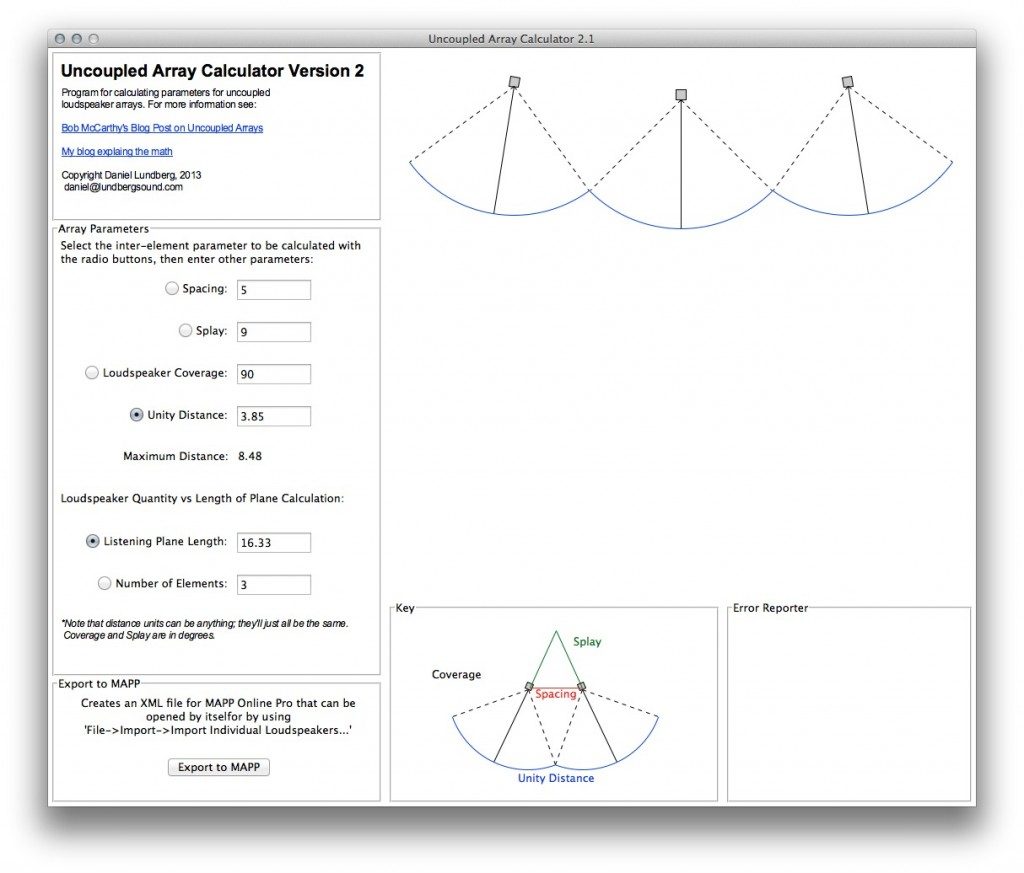
Beyerdynamic TG MM1w – wireless measurement capsule
For measurement projects in large spaces, having the ability to move a mic or mics around without cabling is a huge time saver. Unfortunately there are few options when it comes to wireless systems that are useful for the purpose and they’re all either expensive or require modifications and work arounds. Most wireless systems use a compander circuit that makes the system useless for measurement purposes.
wiki – Companding
The few systems that are capable of providing measurement grade results digitize the signal which avoids compansion. Fortunately, the list of options just grew. Beyerdynamic has announced the TG MM1w measurement capsule that will screw on to their wireless TG1000 series hand held body.
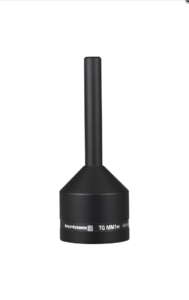

TG MM1w announcement
QUOTE: “The TG MM1w interchangeable measurement microphone capsule completes the beyerdynamic TG 1000 digital wireless system and serves to calibrate ELA and PA systems.
With the TG MM1w, the TG 1000 digital wireless system presents an all-in-one solution. The wireless system can now be used not only to mike speaking and singing voices and musical instruments, but also to calibrate ELA and PA systems in the theatre, at live concerts or at festivals. The TG MM1w interchangeable microphone capsule can be easily fitted on the TG 1000 handheld transmitter and makes it possible to calibrate simply, without needing to lay metres of cable.
The transmission characteristics have been selected to achieve a linear frequency response and therefore natural sound reproduction. The omnidirectional polar pattern of the TG MM1w make it possible to measure the sound equally from all directions. The compact all-metal housing has minimal influence on the acoustic environment and is also very robust.”
Beyerdynamic TG MM1w webpage
Quote: “With the TG MM1w, the TG 1000 digital wireless system presents an all-in-one solution. The wireless system can now be used not only to mike speaking and singing voices and musical instruments, but also to calibrate ELA and PA systems in the theatre, at live concerts or at festivals.
Due to the linear frequency response of TG 1000 the TG MM1w behaves in the same way as the wired version MM1. The interchangeable microphone capsule can be easily fitted on the TG 1000 handheld transmitter and makes it possible to calibrate simply, without needing to lay metres of cable.”
Each microphone is supplied with a printout of an individually measured 0° frequency response curve. The measured data can be requested by sending the serial number of the microphone head to AudioSystems@beyerdynamic.de.”
Beyerdynamic TG MM1w specsheet PDF
Beyerdynamic TG 1000 handheld transmitter webpage
Smaart Survey 080316

There seems to be no consensus regarding how to properly select measurement parameters such as smoothing or averaging any more than there is a consensus on how to tune a sound system. In order to learn what Smaart users are choosing for their smoothing and averaging settings, I’ve configured an online survey. The survey is anonymous and there is no requirement to set up an account. If you are a Smaart user, please take the survey below,
Smaart user survey 080316
You can view the results of the survey here:
Smaart user survey 080316 results
JBL Vertec measurements
A fellow Smaart user invited me to go to a venue to measure their JBL Vertec array while it was done for cleaning and while we were their I suggested we test all the other speakers in the building. Glad we did because we found a cabinet with blown Mid / High, a cabinet with Low wired out of polarity with Mid / High, a cabinet with Mid wired out of polarity, a cabinet with a weak / damaged high driver…
On Wednesday, I visited a local venue with a fellow Smaart user to test some JBL Vertec VT4887a cabinets that were on the deck for cleaning. In order to signal each driver, we fed an amp with directly from Smaart and used that amp output to feed the various speakers. To test the low/mid drivers, a standard NL4 speakon wired Pin 1+/- to Pin 1 +/- was used. In order to test the high drivers, an NL4 speakon cable wired Pin 1+/- to 2+/- was necessary. Consequently, there are no full range traces.
Meyer UMP-1P tests
EV MT series – Prince 1998
Back in the 80s some tours came through the DFW (Dallas Fort Worth) area that were carrying an EV MT series sound system. One production that comes to mind was the Prince Love Sexy tour of 1988 / 1989 that stopped at Reunion Arena in Dallas Texas on November 29, 1988. I was 16 and got to work for IA 127 on the stage crew. I didn’t get to see the entire show but caught the end including the encores. I honestly don’t remember how it sounded but the sound system was an EV MT rig.
Texas Ballet Theater – First Looks BPH
Last show of the season with TBT. Having already done this show in Dallas @ Dallas City Performance Hall, I have a solid grasp on what is necessary for each piece. I’ve actually upgraded by Qlab playback rig in order to have more discrete outputs to feed the PA. Where in the past I’ve fed the sound system with L/R and monitors, I’m now sending a SUB L/R feed as well and may even go the extra measure to feed the center cluster discretely. Why? It give more options for sending things at different levels directly from Qlab. For example, one of the pieces in First Looks requires no low end for some of the music that plays at intermission (think elevator music) while the main music requires lots of low end. One could manipulate the audio prior to playback so that this is accomplished at the audio file level which I may still do but I certainly don’t need to feed any music to the subs that don’t want low end. Here is what my Qlab outputs look like:
1 – Main L
2 – Main R
3 – Monitor 1
4 – Monitor 2
5 – Sub L
6 – Sub R
7 – Center cluster
8 – pilot tone (used to for redundant auto switching)
Tomorrow we will tune the stage monitors and then I’ll post some Smaart traces
The Birth Of The Array
I found this article doing some research about the L’Acoustics VDosc technology. It’s certainlt worth reading if you aren’t already familiar with the history and concepts of line source versus point source.
Chris Tsanjoures – Measuring THD+N in Smaart V8
“When Show THD is enabled and the RTA graph is set to a fractional-octave resolution of 1/12th-octave or higher, the notation THD: n%, will appear in the cursor tracking readout above the RTA graph, where n is the THD percentage value calculated for the current cursor frequency. THD values in Smaart are the ratio of the power in the fractional octave band at the cursor frequency, to the sum of the power in the next three harmonic frequencies. If (and only if) the cursor is positioned at the frequency of a single sine wave being used to stimulate the system under test, this value should be indicative of the total harmonic distortion present in the system at that frequency. Otherwise, it is generally meaningless” user manual pg. 84
wavecapture measurement software
Merlijn van Veen – To Delay Or Not, That Is The Question
Bennett Prescott – Two Processors
Bennett Prescott – Two Processors PDF
bennett Prescott – DSP Differeneces PDF
Here is a youtube video made by Fulcrum Acoustics showing the same basic concept of DSP’s being vastly different in function when set the same:
Merlijn van Veen – Bink Audio Test Warbles
Merlijn van Veen – Smooth Criminal
Dave Rat – The same sound from multiple sources is an unnatural event
Roland Octa-Capture – first impressions
I have been contemplating purchasing a Roland Octa-Capture audio interface for measurement purposes and Qlab playback purposes for the last 6 months or so. After having some long discussions via text with Arthur Skudra about the device and it’s value as a audio measurement device and also getting official verification that the device can provide enough P48 phantom power for up to (8) Earthworks mics at 10mA each, I decided to place an order. I now have (3) of them.
Before I continue I must point out something rather alarming about the device. It comes with a pair of 1RU rack ears but the device itself is taller and you can’t rack mount one without leaving a space between it and the next device. This is a big bummer and I may return two of the three and get something else for playback purposes and hold on to one Octa Capture that I leave the ears off for portable measurement purposes. Stay tuned.
If you’re not discouraged by a device that isn’t rack friendly but very portable, read on. The Roland Octa-Capture is a 8×8 analog audio device with a headphone output with separate volume control, MIDI I/O and SPDIF I/O. With a street price of $500 USD, it’s an interesting device to consider for measurement purposes.
Today I sat down with the device to see what needs to be done to configure it to work with Smaart V8. A few pointers. There is a default setting that appears to be only accessible from the front panel of the device that allows you to turn off a power saving mode. Setting can be either OFF or 4 hours which is the default. Not sure I like that default but all of my boxes will be set to OFF permanently. Next you want to mute all the inputs so that you don’t cause a feedback loop. You never want to send your measurement mic signals to the main outputs!!!
After posting about the unit on the Facebook Rational Acoustics Smaart group, I was handed this helpful piece of information regarding inputs 7 & 8.
Rational Acoustics forum – Roland OctaCapture input levels thread
Rational Acoustics forum – Roland OctaCapture Listening Test
100+ system tunings
Yesterday as I was putting the Fort Worth Opera festival back into the warehouses, I spent a moment looking backward and realized that I’ve probably tuned 100+ sound systems at this point using either SpectraFoo Complete or Smaart 7 or 8. I can’t speak for others but what is clear to me is that without a measurement rig, you’re severely handicapped. Some people draw the line between system tech and sound engineer. For me, those are two sides of the same coin. Who better to know when the system is ready that the person who will be using it or IS using it right now? Dave Lawler has explained that on past performances he has tweaked the system during the opening act and then continued to fine tune things during the actual headliner performance. What this means is that there is no line. There is no point at which it’s time to stop paying attention to the performance and “tune” out. If the person mixing is also the system engineer, there will be a natural curve from beginning to end where things get better and better. I will admit that the first 10+ times I attempted to tune an actual system, I was somewhat clueless as to how to tackle it. I’ve made lots of really silly mistakes along the way but each tuning has been a refinement of understanding the basic concepts necessary (thank you 606!), and the building of a solid foundation where theory becomes ingrained knowledge. Where text book examples are discovered in the wild.
There is a certain amount of hours I think need to be spent in the shop / living room / garage / etc… before you head out with your rig to measure and tune someone’s system. It’s like taking someones car for a drive. You need to know your way around before you should turn the key. In my case I’ve had the opportunity to watch well trained engineers do their work and be able to ask “ignorant” questions along the way without fear of ridicule.
eBay measurement mic – DOA
I recently purchased a used MBNM 550 EL measurement microphone on eBay for $99.95. The mic arrived and I plugged it in yesterday to compare with my other measurement mics. Zero output. Dead On Arrival.
Many times with eBay sellers, it’s like pulling teeth to deal with a situation like this but I was pleasantly surprised to receive this response back from the seller:
“Sorry about that, please keep the item and recycle it or use for parts, I’m sending you a refund now”
I immediately got an eBay message stating I’d been credited the full amount.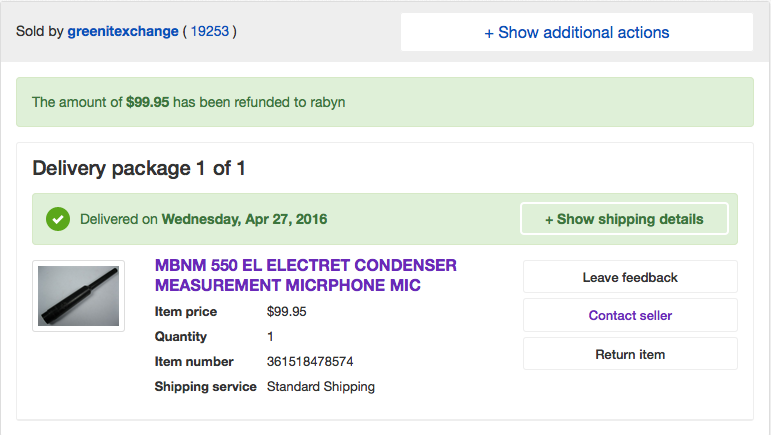
Earthworks M50 matched pair for sale
To Whom It May Concern, the following Earthworks M30 matched pair is for sale. Seller is asking $2000.
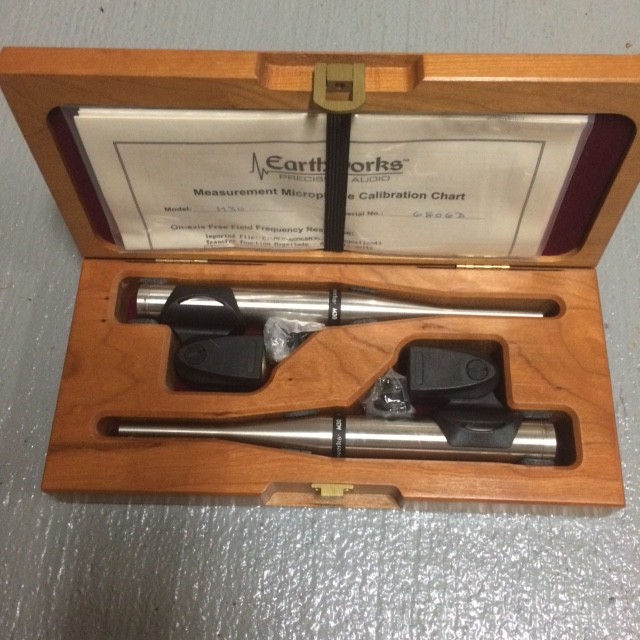
Contact the seller directly if you’re interested:
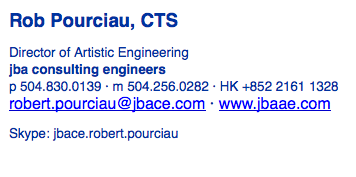
Here are the specs for the microphones:
Frequency Response: 3Hz to 50kHz ±1/-3dBPolar Pattern: Omnidirectional
Sensitivity: 36mV/Pa (-29dBV/Pa)
Power Requirements: 48V Phantom, 10mA
Max Acoustic Input: 140dB SPL
Output: XLR (pin 2+)
Output Impedance: 65Ω balanced (between pins 2 & 3)
Min Output Load: 600Ω between pins 2 & 3
Noise: 20dB SPL equivalent (A weighted)
Dimensions L x D: 229mm x 22mm (9 x .860 inches)
Weight: .5 lb. (225g)
Dallas City Performance Hall – Texas Ballet Theater’s “First Looks” 2016
Looking forward to visiting the DCPH tomorrow and seeing house A1, Jason Wagner again. Jason took Harry Brill Jr’s Smaart 7 class last year in Fort Worth and has hopefully made some progress optimizing the house sound system. A lot was learned last year when Texas Ballet Theater was in the building. Maybe this time around we can make further improvements for the benefit of all.
Part of using a system correctly is data gathering. Each time I visit this venue I’m better equipped to measure and understand how the system works, what the system consists of and how to optimally use it.\
Here are a few details from the system designer and loudspeaker provider:
Jaffe Holden – Dallas City Performance Hall PDF
Fulcrum Acoustics – Dallas City Performance Hall PDF
QSC QSYS – DSP
QSC’s QSYS is an industry standard DSP platform.
Before you try to use a QSYS system, it may be beneficial to watch the online training videos.
LEVEL TWO
BSS London BLU – online training
The two main venue’s where my clients produce shows are Bass Performance Hall in Fort Worth Texas and Winspear Opera House in Dallas Texas. Both venue’s have BSS London BLU DSP systems and so I have been building my own BSS London BLU rig so that:
A. I know how it works and what is possible with the system
B. I have a system that can cover my own DSP needs
C. I am learning a DSP platform that is fairly standard in the audio industry
BSS London BLU is not inexpensive but by being patient and purchasing used on eBay, I’ve been able to assemble a fairly capable and affordable DSP rig.
Unlike some stand alone DSP devices with a fixed architecture, BSS London BLU is a DIY platform. Once you’ve chosen the desired hardware (including how many inputs / outputs / GPIO / etc…) you start with a blank virtual canvas and via device blocks, build whatever you need. What this means is that there is a learning curve just to get audio to pass through the box but at the same time you can achieve things not possible with a fixed architecture device.
Fortunately companies that produce open architecture DSP systems know that there is a learning curve and typically provide an online training program. In the case of BSS London BLU, the video training series can be found here:
With any open architecture DSP system, seeing examples of how to achieve the desired result is helpful to learn how to use the interface.
The dangers of transferring settings from one DSP to another without verification
Bob McCarthy states in his book, “Sound Systems – Design and Optimization”, given the choice between one or the other, he would rather verify a system and not tune it than to tune a system that hasn’t been verified. Let that sink in. What is the purpose of tuning a sound system if the speakers aren’t aimed correctly? What if some of the speakers are out of polarity with others? What if some of the speakers aren’t working at all? What would be the point of trying to measure and tune a sound system like that if your goal is to optimize the system?
Dave Lawler has stated more than once to me that in his travels with artists such as KD Lang & Diane Krall, he has found something wrong with every system he measured (we’re talking about hundreds of systems). Let that sink in. Sadly my experience supports Dave’s statement. Anyone who gets in the habit of measuring sound systems is going to find issues along the way. The question is why? Why is it so rare to come across a properly designed, properly installed, properly optimized sound system regardless of the age or cost of the system? Here are few possible scenarios for a sound system.
1 – the system was well conceived, properly installed and optimized and it’s still in that state for all intent and purpose.
2 – the system was well conceived, properly installed and optimized but somewhere along the way, someone undid that good work thinking they could make the system better.
3 – the system was well conceived, properly installed but the person left in charge of optimization didn’t know what they were doing
4 – the system was poorly conceived, poorly installed & never optimized to begin with.
I’ve come across all 4 types of these systems multiple times. The rarest being #1. I can only think of a few sound systems that were good AS IS.
I was recently in a venue providing audio support for a birthday party. The original plan was to use the overhead house sound system in order to keep things simple. Once I setup my measurement rig I immediately noticed something very undesirable at the house sound system. The system was high frequency heavy and in a very live room, that is NOT a good thing. A tested the system with a handheld vocal microphone and it sounded thin and shrill too. With only a few minutes to regroup I went to my shop and grabbed some self powered speakers and speaker stands. I tuned my rig and the party was a success.
In the meantime, something is definitely not quite right with the venue sound system. I know the system designer and I actually installed the speakers so in theory the system should sound as good but it did not. Unusable as far as I was concerned. After discussing this situation with the house audio guy we made a plan to measure the entire system as soon as possible. He explained to me that the processing equipment had been updated recently from BSS Soundweb Green to BSS Soundweb London BLU but due to time restraints, the system had not been remeasured to verify proper function. Instead the DSP settings had been transferred from the old Soundweb units to the London BLU units.
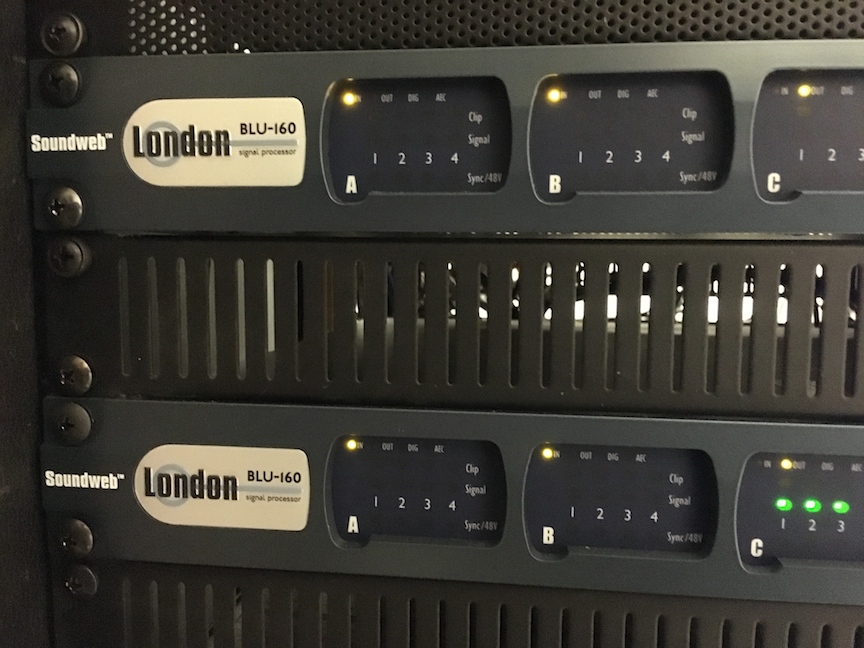
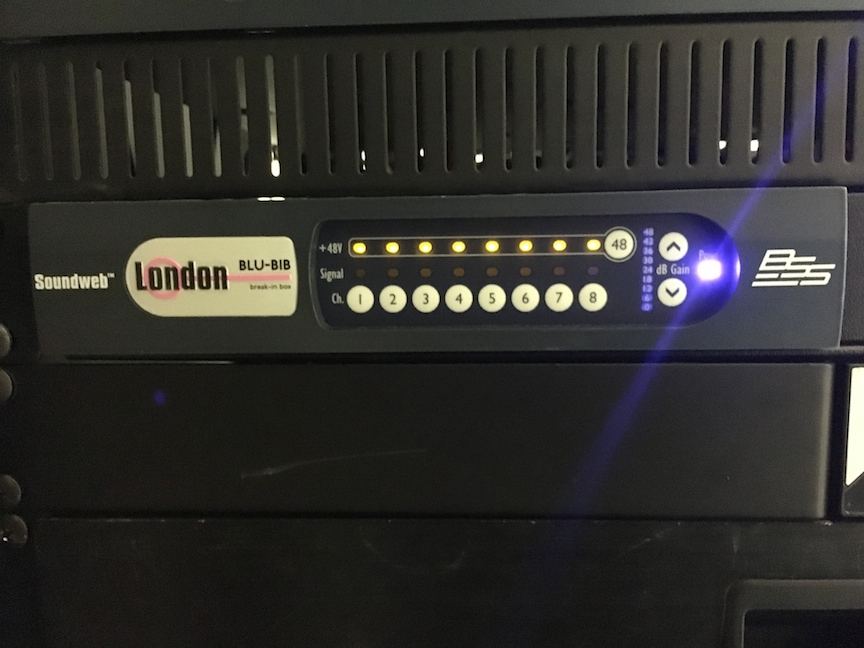
In theory that should be a safe move but obviously something went wrong along the way. Yesterday we setup 3 measurement microphones to measure the rig and discovered there was more wrong that I had thought. A bit of information about the current system. There are (6) EAW KF300 90×45 speakers in the ceiling. In order to keep the ceiling clear of clutter (until the lighting instruments went in), the speakers were mounted above a acoustic grid aiming straight down. There are also (2) EAW SB330 single 18″ subs. The KF300 are being biamped. The SB330 specs say 35 Hz to 148 Hz. Recommended High Pass filter => 30hz, 12dB/octave Butterworth.
Smaart 8 training in Vancouver Washington on June 1, 2, 3 – 2016
I’ve been trying to take a Smaart class with Jamie Anderson for over 2 years and my schedule has never allow for doing so without passing up work. This time I’ve done something dangerous and assumed that I will have the first week of June off.
Consequently, the class fee and airline ticket are paid for and rental car is reserved. If work comes up in the meantime I’ll have to do something I have a hard time doing and simply say I’m not available.
Smaart 8 training – Vancouver Washington 2016
Here is a break down of costs involved so far.
Rational Acoustics – 3 day Smaart training – $750
American Airlines roundtrip airfare between Dallas Fort Worth (DFW) & Portland (PDX)- $255.20
Dollar Rental Car – $224.03
Total investment at this point is $1229.13 before gas, food and incidentals.
When I pick up the rental car, I’ll gladly pay extra for the damage waiver the rental car company offers which will add another $150 or so to the cost. Peace of mind is worth it. I recently asked my car insurance company about rental car coverage. It is true in my case that any rental car is covered for damage up to $25,000 but if there is a claim, it will affect my premium. Also whatever amount of time the rental car may not be available to the rental car company is my responsibility without a damage waiver. The fee is called “LOSS OF USE”. Based on my research so far, nothing covers it (credit card / car insurance / etc…) besides the damage waiver the rental car company offers.
Regarding a place to stay during the trip, fortunately I’ve got friends and family to stay with during my trip.
Meyer Sound – SIM3 rig for sale REVISED
To Whom It May Concern, the following Meyer Sound SIM3 rig which includes (1) SIM-3022, (1) SIM-3088 Line Switcher, (1) SIM-3081 mic switcher, two racks, SIM buss cabling, DB25 break out cables and custom road case is available for $3500 USD plus shipping / insurance.
Seller states: “The unit has been sparingly used the past four years and has been kept at my house.”
Continuing Evolution: Inside New Smaart v8
For those interested in the creators viewpoint on Smaart V8, here it is:
Continuing Evolution: Inside New Smaart v8
Rational Acoustics Smaart v8
miniDSP
Sometimes you don’t have the budget or need for a professional audio dsp
Transmission Lines – acoustic & electronic
There are two types of transmission lines as they relate to loudspeakers. One is acoustic and one is electronic.
WIKI – Acoustic Transmission Line
WIKI – Transmission Line Loudspeaker
The electronic version allows for time correction between woofers and tweeters in a passive speaker design. Using inductors and capacitors, you can delay which ever loudspeaker arrives early (typically the tweeter) and phase align it with the woofer.
I have yet to find a good internet link to explain the electronic version. More soon…
If Bad Sound Were Fatal
QUOTE:
“If Bad Sound Were Fatal, Audio Would be the Leading Cause of Death is about the “mind set” surrounding the most successful education idea in the audio industry, started by Don & Carolyn Davis, the founders of Synergetic Audio Concepts. Taken from over twenty years of Syn-Aud-Con Newsletters, If Bad Sound Were Fatal– is the non technical side of what was shared world-wide with thousands of Syn-Aud-Con “grads.” It is a look at what inspired, thrilled, educated, re-directed, and entertained those on the journey to professionalism in audio and acoustics. It is what the Davises found interesting, both in their own experiences and in the experiences of their grads. Liberally annotated with 2003 comments on the original articles, it reveals the humorous, the travel experiences, philosophy, management mishaps, mistakes and myths, and is a cornucopia of shared synergetic insights on everything from audio to xylophones. There is a heavy dose of history of audio giants, many of whom the Davises knew personally, and the explosion of audio knowledge moving the audio industry out of the 1920s into the 21st century. The majority of the book can serve as an “ink blot” of diverse individuals who shared what amused, entertained and informed them. If you approach this book logically, you’re doomed to failure. It is an extreme case of “free association” reminiscences.”
Zoom F8
The Zoom F8 is an interesting device which might prove to be an excellent 8×4 USB measurement platform.
Roland Octa-Capture versus Studio-Capture
I recently learned that the Roland Studio Capture can’t power more than (8) Earthworks mics which is the same as a Roland Octa Capture. With that in mind, IF you are using Earthworks mics, you would be buying a larger device with more mic preamps that won’t do you any good. If you’re looking for a device for measurement purposes and not planning on using Earthworks mics, the additional 4 mic pres may be useful.
Based on the recommendations of trustworthy measurement engineers that already own and use the Roland Octa-Capture device, I am strongly considering purchasing one or more for portable measurement purposes. The one thing that is stopping me at this point is the 8×8 limitation of the device. For measurement purposes you’re typically going to use one input / output for a reference signal loop. That leaves you with (7) mic inputs which isn’t enough for serious measurement purposes.


The Roland Studio-Capture on the other hand is a 16×10 audio interface that includes (12) mic inputs. Not as portable but it has it’s charm.


12 mic inputs in one portable device would be very useful for measurement purposes as well as recording. I’m waiting to hear back from a fellow engineer who just purchased a Studio-Capture and will report back once he has verified the device meets his requirements. The price difference between the two devices isn’t terribly far apart and having 12 instead of 8 mic inputs may just be worth the extra investment. More soon.
EAW Smaart Version 6 – Plotting Polars, Tweaking Traces by Harry Brill Jr
I was texting with Harry earlier and he shared this MIX magazine article he wrote in 2007. I thought I would pass it along.
EAW Smaart Version 6 – Plotting Polars, Tweaking Traces by Harry Brill Jr

